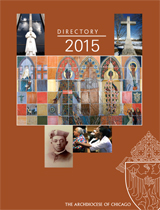October 25, 2009
Fantasy offers glimpse of childhood realities
Some movies are events as well as movies. “Where the Wild Things Are” is one of those movies. The irresistibly-illustrated book of the same title has been a kid’s favorite the world over since 1963.
“Wild Things” is a tight collaboration between author Maurice Sendak, 81, and fiercely original, indie-experimental director Spike Jonze, 39.
The result? Definitely not Disney, but while avoiding many Hollywood tropes, Jonze has made the movie accessible to kids and adults alike.
Is it a kids’ movie? Nope. Jonze is clear that this is a movie about children, not for children, although he definitely wants children to see it. There has been some completely unfounded concern that the PGrated “Wild Things” may be too scary for kids. There is nothing scary in this movie.
For those unfamiliar with the plot, Max (Max Records) is a “wild thing” of a boy who — irate about the usual childhood travails: feeling alone, powerless and set upon by everyone — runs away from home by sailboat, and winds up among large furry creatures who make him their king.
From the get-go, these beasts are dangerously ambivalent towards Max. There is much talk of “eating.”
But these monsters — fickle, petty and jealous as they are — demand truth from Max. The truth about himself he hasn’t been willing to look at. They ask very direct questions and expect him to deliver on his promises.
The golden-crowned Max is given free reign to make all his dreams come true. But dreams aren’t that easy. Relationships are complicated and “it’s hard to be a family.” Monarchy is hard on imperfect subjects and fallible kings. Subjects demand that their kings make them “happy,” and kings think they can.
Main man monster, Carol, (James Gandolfini) is closest to Max and has the same unrealistic expectations about life that Max does, and that’s why their relationship is quickly moribund. Details Max hasn’t dealt with from his real life haunt him in his make-believe world.
The monsters’ characters are well developed and their constant mumbling and commenting amongst themselves is a real delight of the movie. And they look exactly like the book’s illustrations. Jonze understands how children play, and much of the movie is physical action: tromping through forests and deserts, snowball fights, dirt-clod fights, getting deliciously wet and dirty.
“Wild Things” is a great movie for kids to exercise their “moral imagination.” What happens when Max makes and then breaks rules? Even in a game? Are there real consequences? How about when Max lies? Do “people” get hurt?
Max barks, roars, howls and speed-runs with an unrestrained freedom seldom seen in today’s tightly orchestrated portrayals of kids. One of the best relationships in “Wild Things” is between Max and his mom. She’s not a stereotypical “too-busy-for-my-kids-working-singlemom.” Rather, Max selfishly wants her every minute.
Like “Coraline,” “Wild Things” reminds us that “there’s no place like home,” but sometimes we’re going to need to get away in order to appreciate that fact. (How about your local movie theater?) Oh yeah, and it’s great to be a kid.
Burns, who ministers in Chicago, has a philosophy/theology degree from St. John’s University, N.Y., and studied screenwriting at the University of California-Los Angeles.
 Catholic
New World - Newspaper for the Archdiocese of Chicago
Catholic
New World - Newspaper for the Archdiocese of Chicago Archdiocese of Chicago Directory
Archdiocese of Chicago Directory Oficjalne wydawnictwo Archidiecezji Chicago w języku polskim
Oficjalne wydawnictwo Archidiecezji Chicago w języku polskim